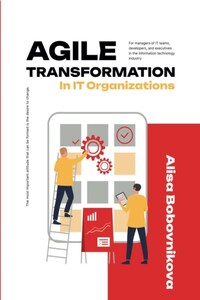Current market conditions stimulate organizations to introduce innovative product improvement solutions. Environment changes responsiveness became an important factor in market competition. This trend is especially typical for the IT industry as this field is characterized by a lot of innovation. Transforming companies find it difficult to adapt to continuous change. This is often caused by lack of organizational flexibility and changes responsiveness practice. In order to address this issue, companies need to continuously search, evaluate, analyze and develop new tools for organizational culture.
This narrative is for those who have chosen the path of transformation to gain speed, flexibility and effectiveness. We will talk about how to improve the team’s effectiveness with agile techniques and also give you an idea how to start changes and how to measure them.
Chapter 1 discusses the approach to understanding agile methodology and its main provisions. Special attention is paid to the relationship between the type of thinking and the team effectiveness. Continuous customer focus and the need for regular teams’ interaction is revealed from practical examples.
Chapter 2 reflects agile management features and waterfall approach, which is also considered classic. This chapter provides these methodologies comparative analysis, highlighting distinctive features and opportunities for their use.
Chapter 3 describes agile transformation stages, most common agile frameworks, their distinctive features as well as their pros & cons.
Chapter 4 provides an overview of the main existing agile methodologies with implementation examples, as well as a step-by-step agile implementing roadmap also considering agile driven project documentation required.
Chapter 5 and Chapter 6 describes agile implementation effectiveness assessment methods, analyzes direct and indirect implementation process metrics as well as the technique implementation success criteria in different companies’ practice, and provides key agile project’s KPIs.
Chapter 7 is dedicated to the agile transformation challenges and explanation what agile coaching is, describing Agile coaching levels and tools as well as how coaching can help you with transformation.




